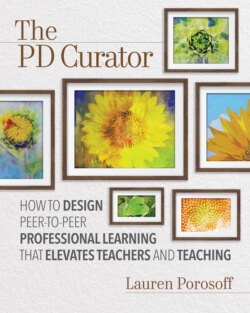Читать книгу The PD Curator - Lauren Porosoff - Страница 18
Starting Small
ОглавлениеBy now, it might sound like I'm arguing that the only way to make peer-to-peer PD work is to redesign your school schedule and faculty workspaces. That's not the case. You might want to make small tweaks, but drastic overhauls aren't necessary—and often aren't possible.
If there's one message to take away from this chapter, it's this: use what you have. Use available time for professional learning. Set up existing spaces to encourage professional learning. Most importantly, just start doing professional learning with your faculty. You don't need to download a museum's app, preorder tickets, and look up all the works of art online to visit a museum; you can just go. Similarly, one of the best ways to build a foundation for in-house PD is to start doing in-house PD.
One event, or one group trying out the practices described in the upcoming chapters, is a start. Even using one strategy to determine what teachers want to learn about—or what they can contribute to one another's learning (which you'll hear much more about in the next chapter)—is a start. Taking one small step isn't just better than doing nothing; it begins orienting teachers to the fact that their professional environment is a learning environment.
Over time, you might find that you can do more. You might find that teachers who try in-house PD once ask to do it again. Or you might find that teachers who hear about colleagues in other departments learning from and with one another want their own departments to do it too. You might even find that teachers suggest ways to use time and space you haven't thought of. If teachers start asking for in-house PD, building it will still require work, but you might find that work more satisfying when you know your faculty cares about it as much as you do. You might even discover that some teachers are willing, if not eager, to share the workload.
